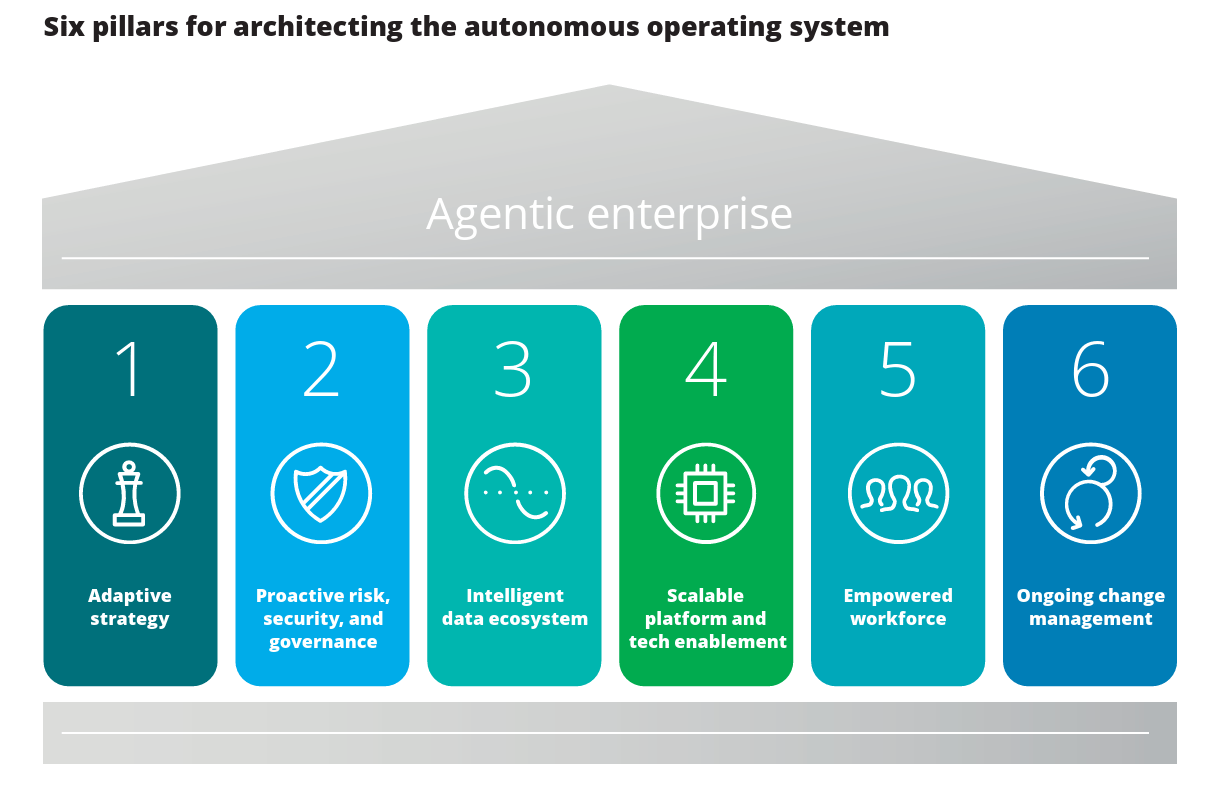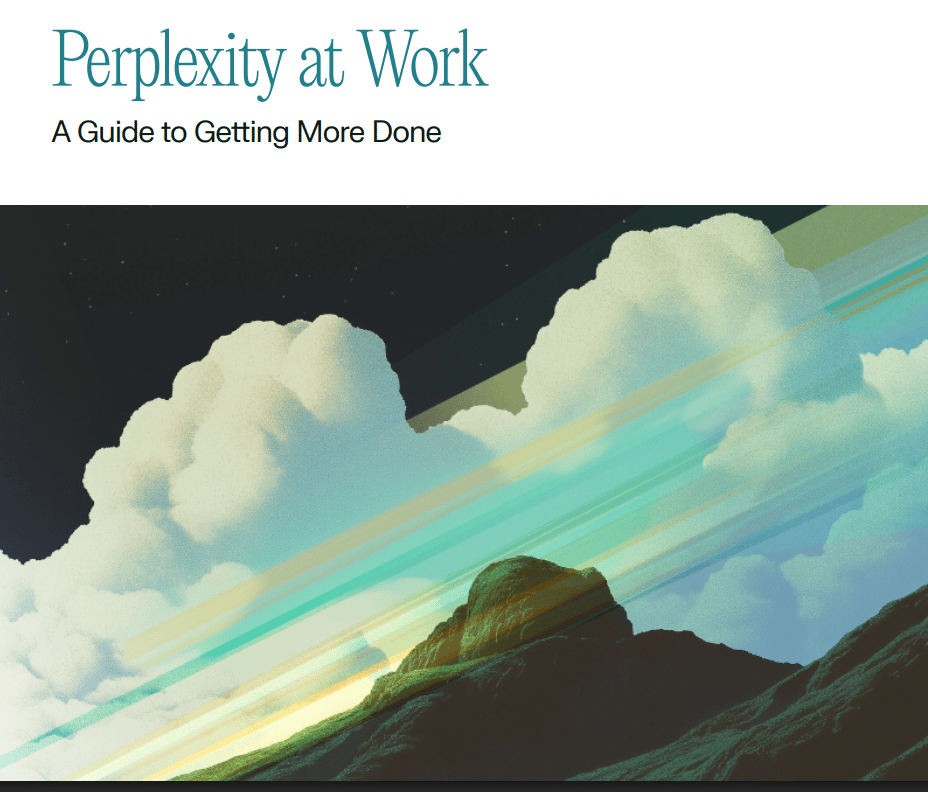- GPTLDR
- Posts
- How Deloitte, Perplexity, and Intuit Make AI Work—Strategy, Stack, Safety
How Deloitte, Perplexity, and Intuit Make AI Work—Strategy, Stack, Safety
What to do now: align on the 6 pillars, unify your stack, and codify financial AI rules
⏱️ Your Friday Brief (TL;DR)
Welcome back!
This week, we're breaking down Deloitte's blueprint for the "Agentic Enterprise 2028," Perplexity's power move to replace your entire productivity stack, and why Intuit's hard-learned lessons about AI trust could save you millions in implementation headaches.
Deloitte’s agentic enterprise 2028 blueprint.
Perplexity’s guide to AI at work.
It requires companies to fundamentally rethink how work gets done.
Let’s dive in 🤖

Source: Deloitte
The GPTLDR
Deloitte's latest report reveals that by 2028, Agentic AI will be the default operating model for enterprises. Companies that adopt early can expect major cost savings, faster product cycles, and new job creation, provided they manage the transition deliberately and responsibly.
The Details
Deloitte outlines six levels of AI maturity—from “Assist” (basic automation) to “Self-Evolve” (fully autonomous multi-agent systems).
Human roles shift from operator → guide → strategist → orchestrator as autonomy rises.
Six Pillars of the Agentic Enterprise
Adaptive Strategy – Treat autonomy as a core business transformation, not an IT project.
Proactive Risk, Security & Governance – Introduce “guardian agents” and policy-as-code to maintain trust.
Intelligent Data Ecosystem – Build unified, vectorized data fabrics that feed real-time decisions.
Scalable Tech Enablement – Move from APIs to MCP/A2A (Model Context & Agent-to-Agent) architectures.
Empowered Workforce – Redesign roles around orchestration, oversight, and creativity; new roles emerge like “Agentic Process Strategist.”
Ongoing Change Management – Focus on workforce trust, transparency, and brand reputation in an era of algorithmic decision-making.
Why It Matters
Autonomy isn’t a plug-in — it’s a phased transformation.
Early movers will shape industry standards and capture outsized advantage.
Key questions for leaders:
Are our systems agent-ready?
How do we measure autonomy ROI?
What new roles and controls must we create?

Source: Perplexity
The GPTLDR
Perplexity offers up a practical guide explaining how professionals can use its tools (Comet, Labs, Spaces, Research, and Email Assistant) to work smarter and achieve measurable results.
The Details
It’s essentially a user and productivity manual showing how to integrate AI into everyday workflows — not just for automation, but for focus, amplification, and outcomes.
The report frames productivity around three layers:
Block distractions: Reclaim focus by automating repetitive and context-switching tasks.
Scale yourself: Use AI to multiply your capabilities — research, create, and problem-solve faster.
Get results: Apply your enhanced capacity toward visible, career-advancing achievements.
Perplexity offers your team an all-in-one workspace:
Comet: An AI browser that reads, reasons, and executes actions.
Labs: A creation studio for building dashboards, presentations, and reports.
Research: Deep search and document analysis.
Spaces: Personalized environments for consistent tone, branding, and knowledge management.
Email Assistant: Automates triage, scheduling, and replies to eliminate inbox overload.
Why It's Important
Consolidation is coming: The era of juggling 15+ AI subscriptions is ending – unified platforms will win.
Context persistence matters: Context follows you wherever you go—so you're always picking up right where you left off.
Enterprise adoption accelerator: By solving the "too many tools" problem, Perplexity removes a major barrier to AI adoption at scale.
Effortless Tutorial Video Creation with Guidde
Transform your team’s static training materials into dynamic, engaging video guides with Guidde.
Here’s what you’ll love about Guidde:
1️⃣ Easy to Create: Turn PDFs or manuals into stunning video tutorials with a single click.
2️⃣ Easy to Update: Update video content in seconds to keep your training materials relevant.
3️⃣ Easy to Localize: Generate multilingual guides to ensure accessibility for global teams.
Empower your teammates with interactive learning.
And the best part? The browser extension is 100% free.
The GPTLDR
Intuit (QuickBooks, TurboTax) has deployed autonomous AI agents across tax, payroll, and accounting workflows – but the real story isn't what they built, it's the brutal reality they discovered: financial AI faces unique challenges around trust, error tolerance, and user experience that can make or break adoption.
The Details
Intuit’s new “Intuit Intelligence” system embeds specialized AI agents in QuickBooks for tasks like sales-tax compliance and payroll.
Crucially, instead of relying purely on LLM-generated responses, Intuit’s architecture queries actual structured customer data (their QuickBooks data + third-party connected systems + spreadsheets) so that results are grounded in verified data not just text completions.
The company learned that even when accuracy improved significantly (transaction categorization improved by ~20 percentage points), users still complained about errors. As one Intuit executive put it:
What They Did Differently
Data-first query architecture: The AI doesn’t just produce generative text; instead it translates a user’s natural language query into database operations on their verified business data.
Explainability built into the UI: When the AI agent categorizes a transaction, the user sees not only the result but the logic/reasoning (data points) behind it.
Incremental interface shift: Rather than asking users to switch entirely to conversational AI, Intuit embedded agents into familiar workflows (forms, tables) and gradually introduced conversational elements.
Why It’s Important
It shows that deploying AI in high-stakes domains (finance, tax, compliance) cannot follow the same “chatbot + wow” playbook as consumer AI. Trust, accuracy, auditability matter more here.
It reinforces the idea that user trust is fragile: even after measurable accuracy gains, any visible errors can undo months of progress.
AI value emerges when it’s embedded in actual workflows (e.g., payroll, accounting, reconciliation) rather than as a standalone novelty.
📚 Interesting Reads
BCG warns that fully autonomous, AI-only firms are 5-15 years away, forcing incumbents to become AI-first companies to compete.
Menlo Ventures - 2025 State of AI in Healthcare: Healthcare is adopting AI 2.2x faster than the broader economy.
CIO - 8 Ways Agentic AI Will Transform IT Operations.
Slack - What Is Customer Data Integration and how it enables better decisions and powers AI tools with context for analysis and prediction.
ClickUp - Solve Work Sprawl with Contextual AI.
BCG's FAST framework helps companies deploy AI agents safely
➜ Until Next Week
This week's insights paint a clear picture: The agentic transformation is here. Deloitte shows us the roadmap, Perplexity gives us the tools, and Intuit teaches us the hard lessons.
One action for this week: Pick one high-volume, low-risk process in your organization. Start there, learn fast, and scale what works.
Stay curious,
—The GPTLDR Team
AI, simplified for Decision Makers.

